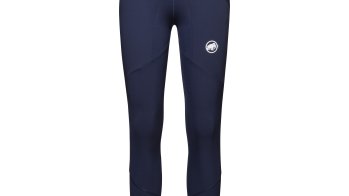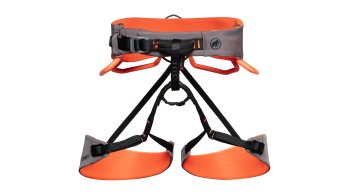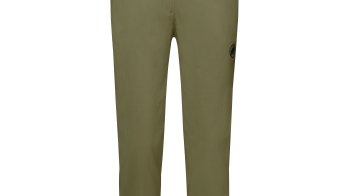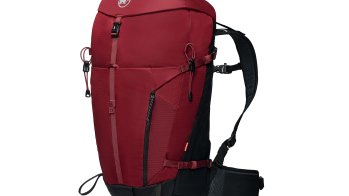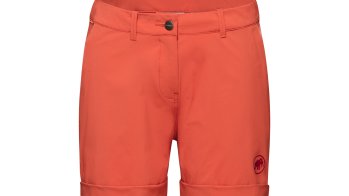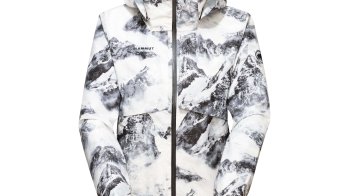
Diversity and inclusion are hot topics for many outdoor brands. This is also the case for Mammut. About a year ago, the brand began to take a closer look at the requirements to even better address female target groups. This resulted in the "win the female consumer" project with a range of products specially developed for women. In an interview with ISPO.com, Rebecca Klee, project manager and Head of Urban Apparel, explains the considerations that led to a stronger focus on the women's collection in product development.
To understand what you can do better, you have to question yourself. That is why Mammut analyzed the design and development process for Mammut products. Based on the insights, the brand researched and made adjustments to address the needs of women even better.
"We found that our women's products and collections were often developed in differentiation to our men's collection," Mammut project manager and Head of Urban Apparel Rebecca Klee explains. So it was a matter of considering what female customers like to do, what activities they pursue, from hiking to ski touring to climbing.
Gender plays a role to a certain point in these sports. Women move differently, have different body shapes, and have different anatomy. This must be taken into account when developing a product.
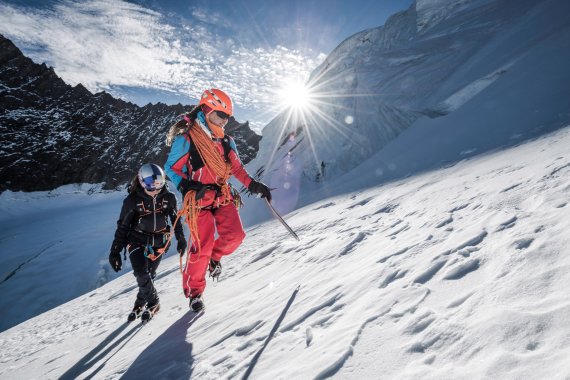
Overall, Mammut is very well positioned to develop women-focused products. Products such as sleeping bags, backpacks, and even climbing harnesses highlight fit and performance. As an example, climbing harnesses are precisely adapted to the female body, since the distance between hip and thigh is different than for men. This expertise has now been increasingly used in the apparel sector as well.
Creating representation and visibility for the women's collection is a necessary step. It is also key to Mammut to show that women do not have only one side to show, but are diverse, in their activities and personality.
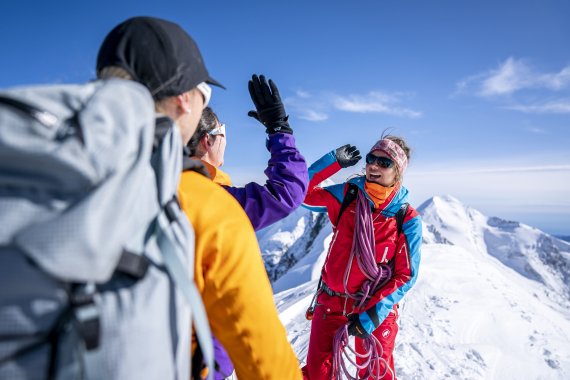
The immediate exchange with women in outdoor sports then gave further insights into their needs and wishes. "We held focus groups in Zermatt to listen to and exchange ideas with very different women from different sports and activity levels over two evenings." Rebecca Klee describes these focus groups as an important tool in the development of women-specific products and understand the customers better.
Differences among the individual female athletes helped in the further development of the products. Fit is a big issue, as are colors. In the future, there will be a big focus on climbing, especially climbing pants as well, where fit, elasticity, and how the material feels play an important role. Additionally, thought was given to details and how they can be used to add extra value for the wearer, such as integrating zippered pockets on tights.
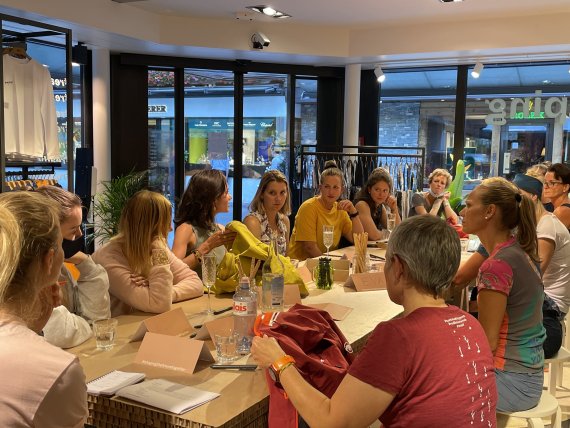
For the coming seasons, from spring/summer 2022, a lot of time was invested in the further development of tights, as they are also used in a wide variety of activities. Above all, the general product principles and focus of Mammut as a brand were incorporated. The tights were developed with "Fast & Light" in mind, meaning being on the mountain quickly and with light equipment. "Compared to yoga, where you might be in the tight for an hour, on the mountain these are used for completely different activities. There, you wear the pant longer, they must stay in place and their shape has to fit all day," explains Rebecca Klee.
How the wearer feels makes just as much of a difference during sports. "It was important to us that women feel strong and confident when performing their activities in the mountains," says Rebecca Klee. Properties such as snugness as well as compression of the tights are then important, which is why the new collection is high in elastane. Zip-pockets offer an additional benefit. In upcoming years the collection will be expanded further in terms of functionalities, for example with a water-repellent tight.
Even though it is primarily the apparel part of the women's collection that has been expanded and revised, women-specific products in the hard goods area, such as climbing harnesses and backpacks, complement the concept. As a high-performance outdoor brand, Mammut wants to offer women all the products they need to pursue their outdoor activities without worrying about fit issues.
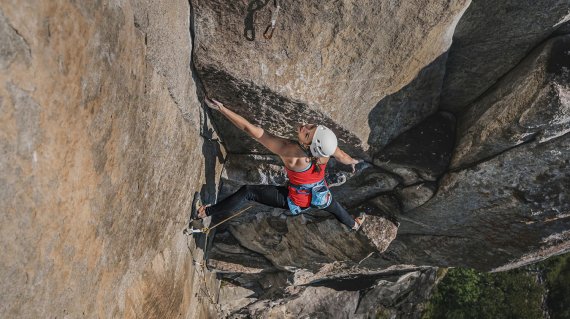
Pink as a color works very well, especially in the mountaineering collections, because bright, vibrant colors create visibility there. Nevertheless, Mammut does not want to use it thoughtlessly, but rather to address customers in a targeted manner. In the past pink was often used for women and blue for men. In the upcoming winter collection, which is inspired by the sportswear of the 80s, this theme was exaggerated by the brand. To make it more modern, Mammut combines it with earthy tones and a dark blue.
Will there be unisex colors for women and men in the long run? According to focus groups, no. A certain amount of color differentiation is still desired. In order to find out where things are going and how outdoor clothing is developing the brand is listening closely to consumers.
Even if the trend at Mammut is towards more equality in product development, unisex collections in mountaineering, for example, are not planned. "Equality is not the same as unisex. With high-performance products, fit is key - unisex makes no sense here. It was only 30 years ago that women had to turn to men's products because there was simply no specific equipment and clothing for women," says Rebecca Klee. "Making products specifically for the needs of our female customers has a lot to do with fit and cuts. We definitely don't want to move away from that. Where we go color-wise is another matter."
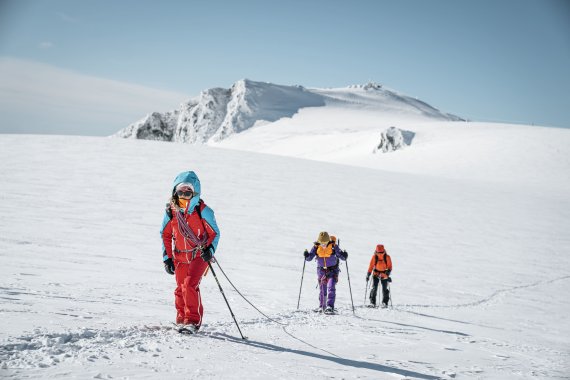
Mammut has also questioned the mindset in the company and is now starting the development process with the women's collection. Historically, the company began with the men and then often mirrored the women's collection afterward. In order to raise awareness and achieve equality in the collections in the long run, the process has been reversed.
Of course, the two collections are not in competition and still fit together. They both bear Mammut's signature.
Quality, functionality, and safety play a big role for Mammut as a brand, as does the reliability of their products. The angle and focus on women is simply an additional perspective. This should also be the case in the future as Mammut sees the development of women-specific products as a permanent process to better equip and inspire female customers in their outdoor adventures.
For more info on Mammut and the current collection: www.mammut.com
Highlights of the women's collection from Mammut
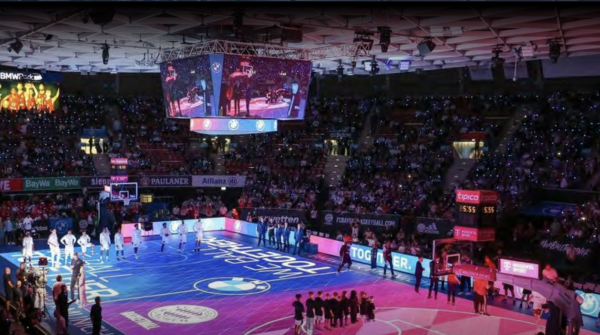 Sports BusinessPhygital Sports League: gaming meets real sport
Sports BusinessPhygital Sports League: gaming meets real sport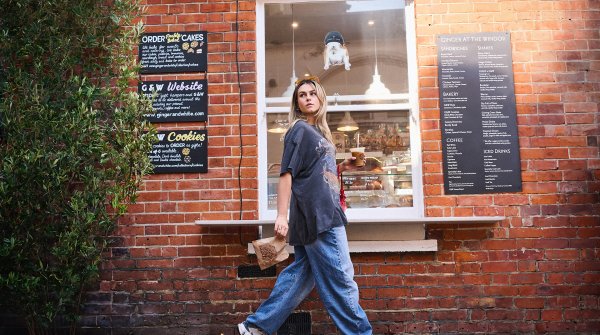 Sports BusinessFrom Outdoor to outside: How Merrell Is redefining adventure
Sports BusinessFrom Outdoor to outside: How Merrell Is redefining adventure
- ISPO awards
- Mountain sports
- Bike
- Design
- Retail
- Fitness
- Health
- ISPO Job Market
- ISPO Munich
- ISPO Shanghai
- Running
- Brands
- Sustainability
- Olympia
- OutDoor
- Promotion
- Sports Business
- ISPO Textrends
- Triathlon
- Water sports
- Winter sports
- eSports
- SportsTech
- OutDoor by ISPO
- Heroes
- Transformation
- Sport Fashion
- Urban Culture
- Challenges of a CEO
- Trade fairs
- Sports
- Find the Balance
- Product reviews
- Newsletter Exclusive Area
- Magazine

